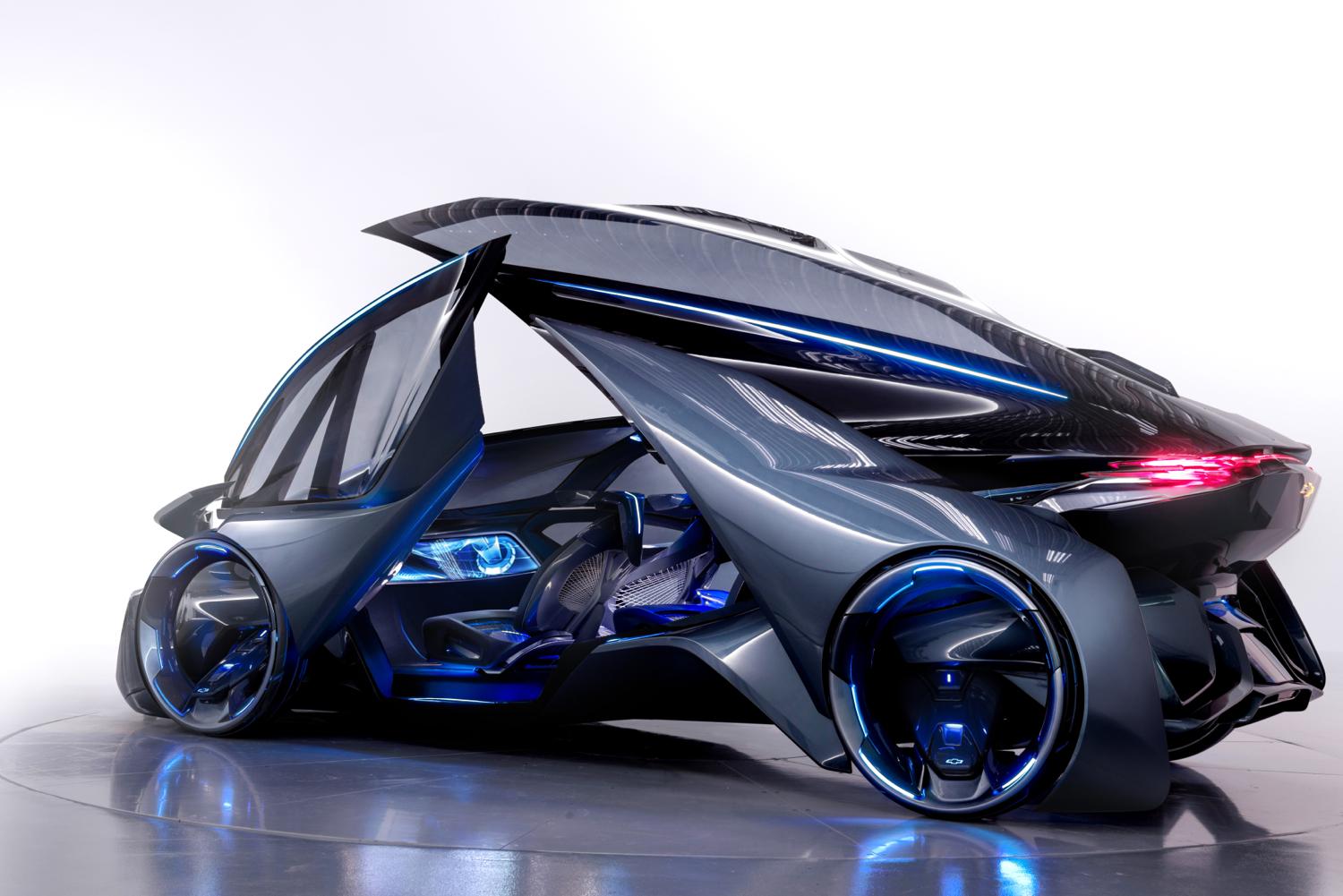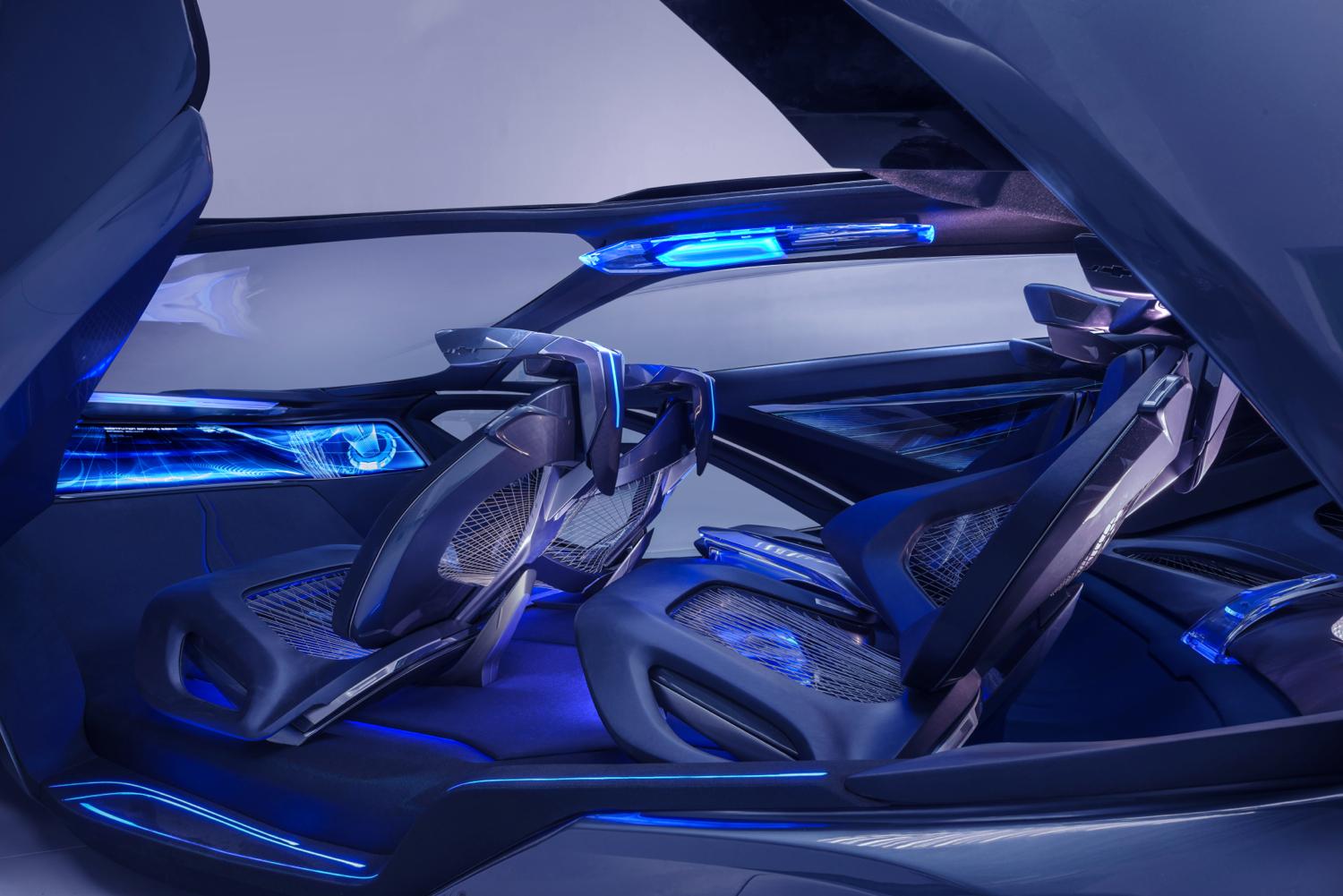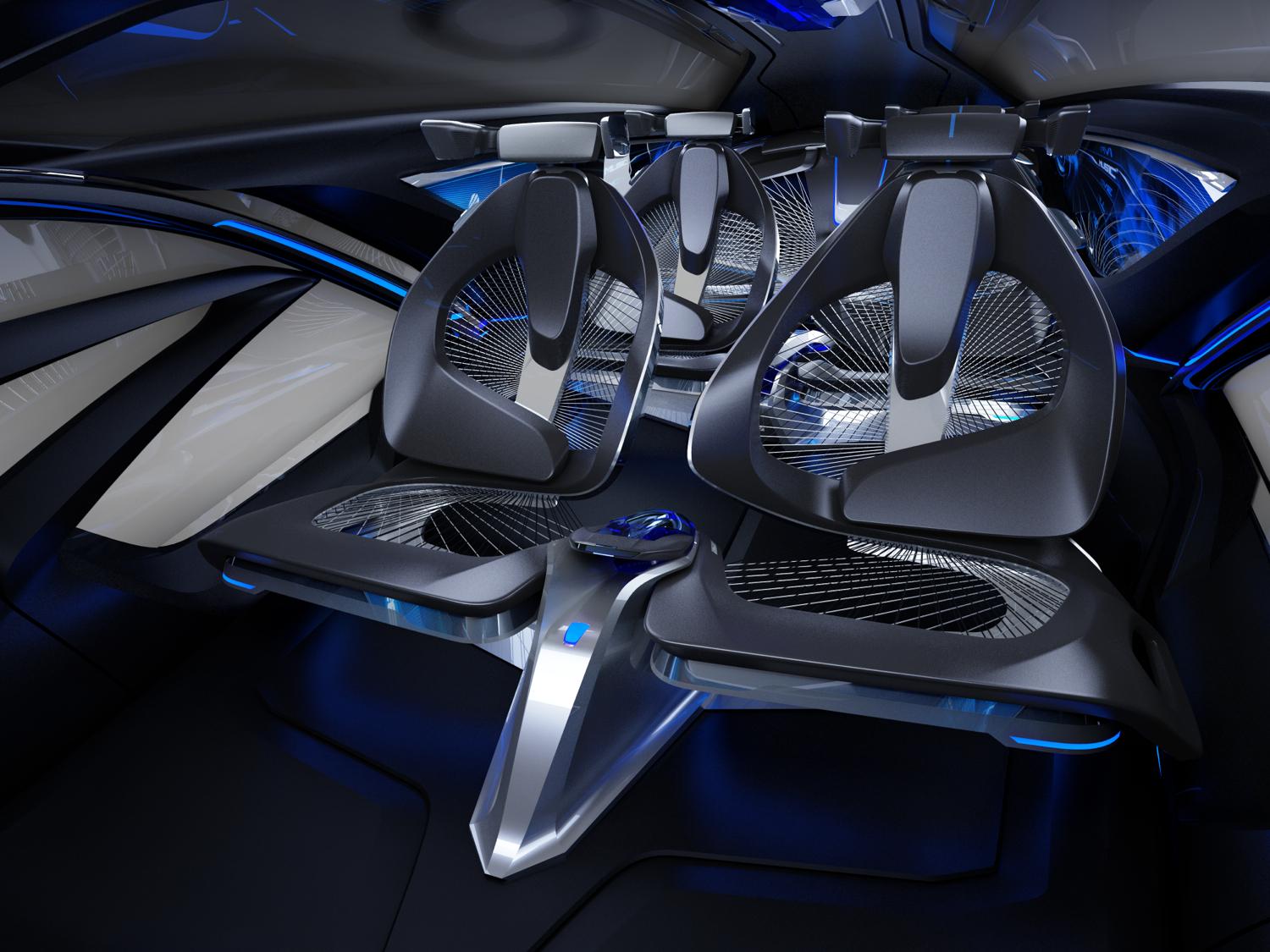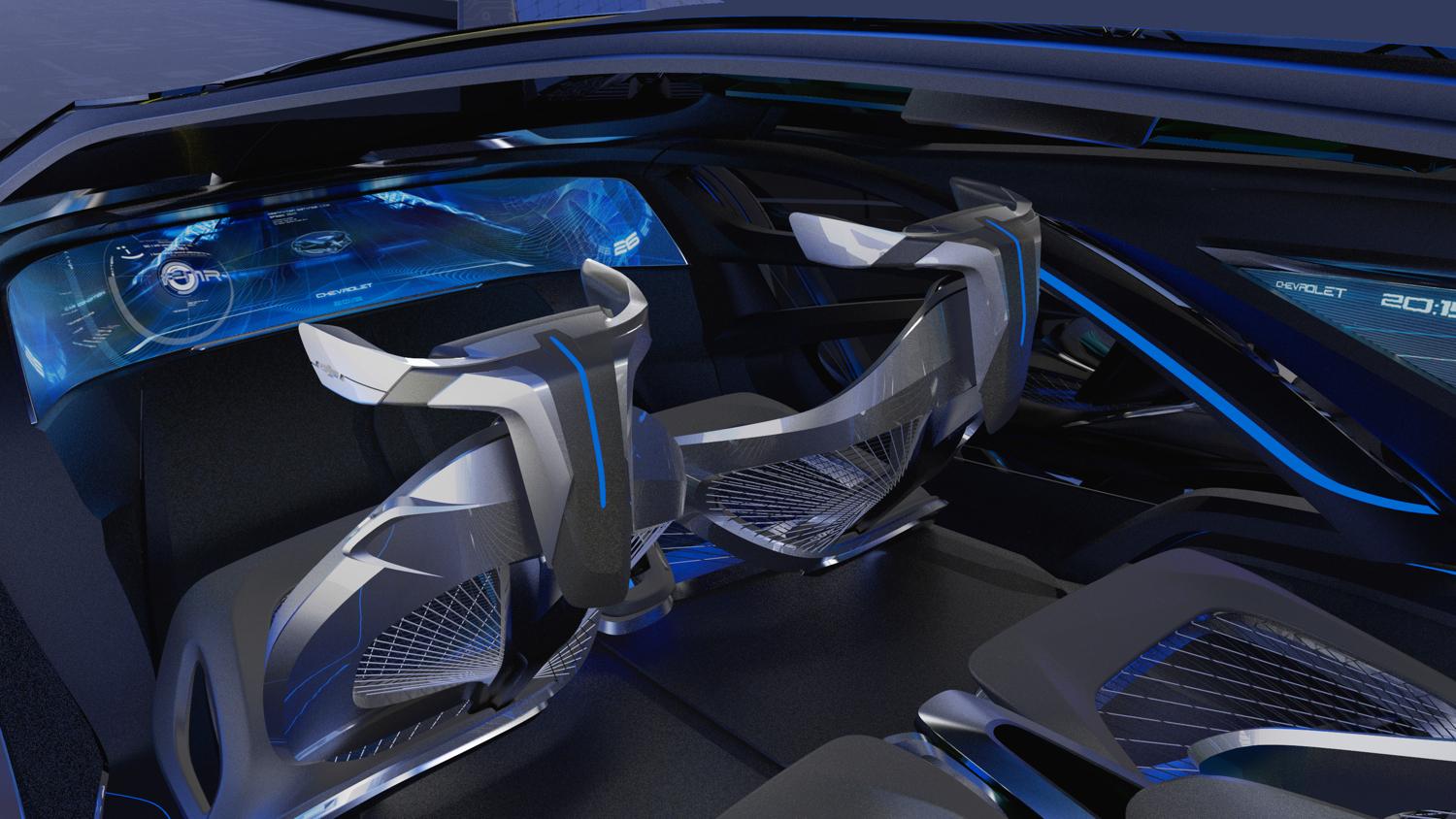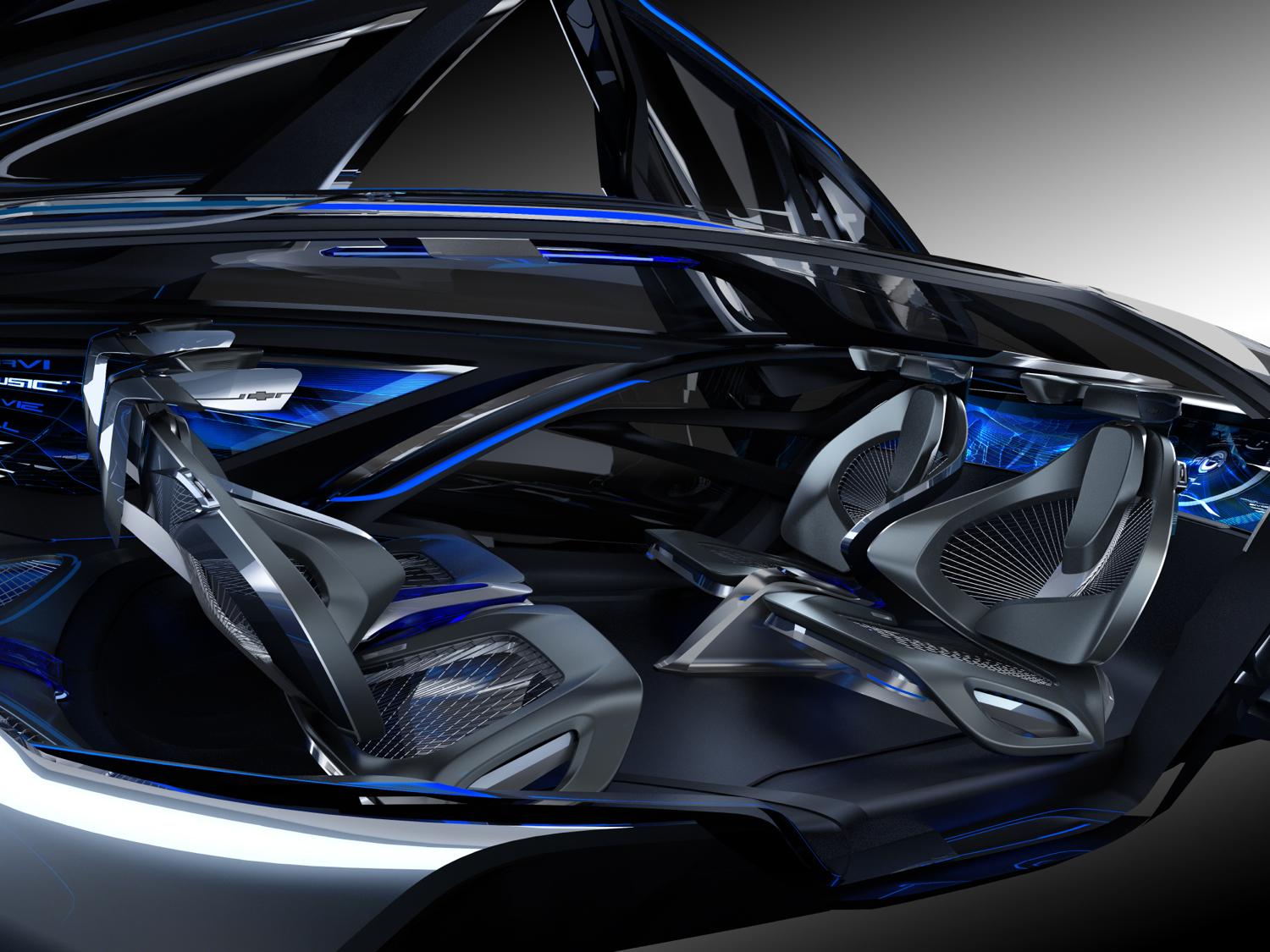Some concept cars are meant to preview future production models, others are simply meant to grab attention. This one belongs to the latter category.
Debuting at the 2015 Shanghai Auto Show, the Chevrolet FNR concept is more of a dream than a real car, but it will look pretty darn good on Chevy’s stand at the show.
While some cars are inspired by fighter planes or muscular athletes, the designers at General Motors’ Shanghai-based Pan Asia Technical Automotive Center seem to have taken a page from insects.
The FNR features a “capsule” design, with the wheels pushed out to the corners and well away from the four-passenger cabin. “Dragonfly” dual-swing doors allow most of the bodywork to peel away like discarded pieces of armor.
Lighting the way through the Phillip K. Dickian futurescapes that are likely this car’s natural habitat are “crystal laser” headlights and taillights, which seem like an attempt to one-up the production-ready laser light systems of certain German carmakers.
The powertrain is just as sci-fi as the styling. Chevy says the FNR sports magnetic hub less in-wheel electric motors, and an automated wireless charging system..
While the FNR looks pretty sporty, Chevy wouldn’t hypothesize on performance figures, or even offer further details on how the car’s futuristic propulsion system is supposed to work.
Another piece of future tech on the FNR’s resume is self-driving capability. It uses onboard sensors and a roof-mounted radar unit to map out the environment, and can even suggest alternate routes when a human being is at the controls.
The switchover from manual to autonomous operation is accomplished using gesture controls. In autonomous mode, the front seats swivel 180 degrees to face the rear seats, turning the FNR into something like a living room on wheels.
Other tech features include Chevrolet Intelligent Assistant – whatever that is – and iris recognition. The FNR can only be driven if it gets a positive iris ID.
The Chevrolet FNR is obviously too outlandish for production, but it’s part of a trend of concept cars that try to anticipate how autonomous driving will change car design.
Like the Mercedes-Benz F 015 or Rinspeed Budii , the FNR was designed from the perspective that the changes wrought by autonomy will be more than just mechanical.
If people really do give up driving en masse, they may very well start using their cars in different ways. That future is still a long way off , but designers are already anticipating it.
